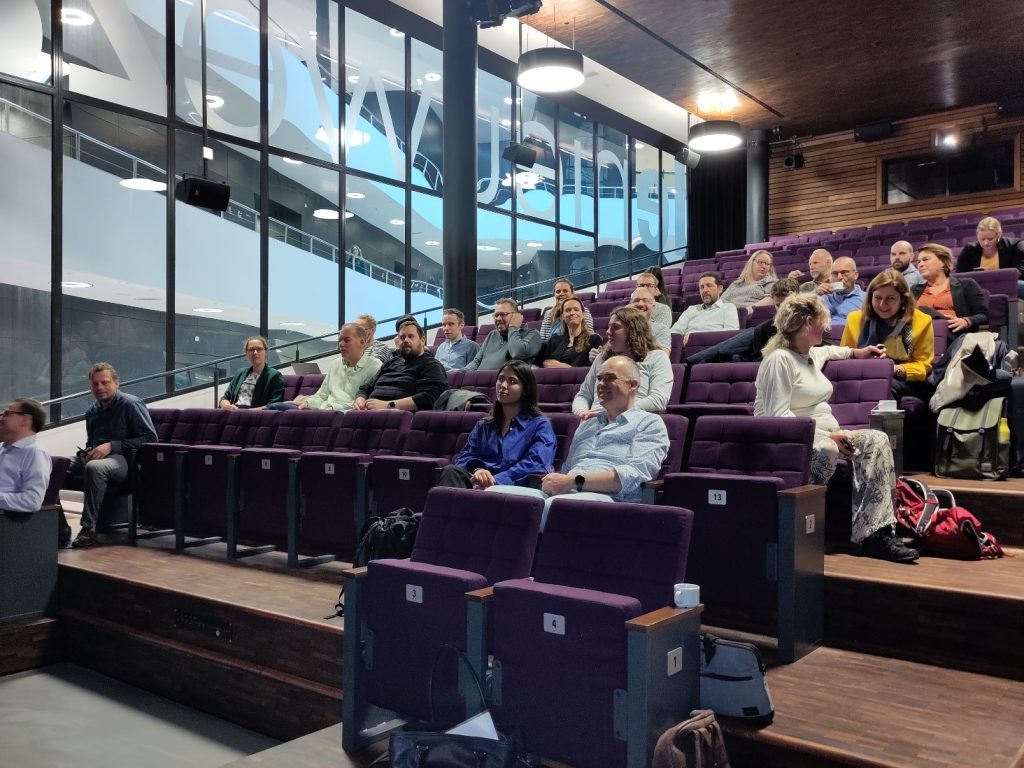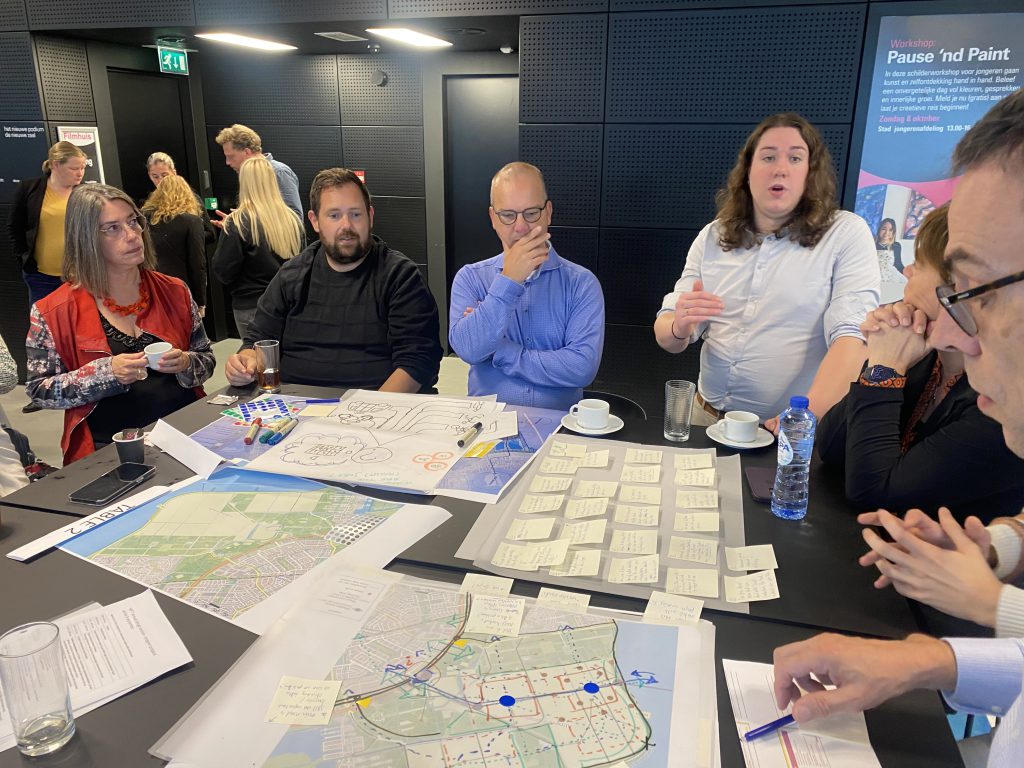
With great enthusiasm, the first design session for the XCARCITY Programme took place last week Thursday, 12 October 2023. Attracting a great turnout of over 40 consortium members, the day has been marked as a success. The stage for innovation was none other than De Nieuwe Bibliotheek in the heart of Almere, where dreams of a city with fewer cars came to life.
The mission? Transform the Almere Pampus Case through groundbreaking, low-car design ideas. The goal of the design session was to learn from design choices and identify specific next steps to take the vision of a city with less cars forward. The design session also sets out to inspire other XCARCITY Case study areas, provide an opportunity to experiment with design methods and start to test the integration with digital twins in the methods. The session set out to let partners get to know one another better, inspire one another and pull together different skill sets in working towards a common vision.
An action-packed agenda featured Maaike Snelder’s captivating introduction, and Arjan van Binsbergen setting the scene. The magic of the day lay in the diversity of partners, from engineers to designers, and governmental bodies to consultancy firms. The atmosphere presented a perfect opportunity for creativity and innovation to take place in designing the future for the Almere Pampus.


XCARCITY is focusing on three case areas, Almere Pampus, Amsterdam Region and Metropolitan Region Rotterdam-The Hague (MRDH). The day started with Lobke Zandstra presenting the case of MRDH, followed my Maarten Peters on the Amsterdam Region (MRA Platform), and finally Paola Huijding setting the scene for Almere. All three presentations provided insight into their case areas, highlighting their goals and vision for the future, as well as the opportunities within the XCARCITY Programme. Lobke highlighted the problems surrounding lack of staff in the pursuit of more public transport while Maarten noted that carless concepts are perceived to work best in higher density areas, there is a great desire to keep focusing on the smaller cities around Amsterdam.
Michiel van Bokhorst then took the stage, diving deep into the Almere Pampus Case and setting the scene for the design session to follow. He shared the captivating history of Almere, its connection to Amsterdam, and the grand vision for a new city district. 35,000 houses and 16,000 job opportunities are in the vision. Michiel noted that multiple mobility studies have taken place and need to be considered in the designs. The underground constraints of this former polder area were also highlighted, adding another layer of complexity to consider in the designing of the area.
Programme
The day centered around two main design sessions across two key Scenario:
- Scenario one focused on a low-density land use, private car oriented scenario – a more ‘business as usual approach’, while,
- Scenario two presented a high-density land use, public transport bike oriented scenario – a more ‘future proof’-scenario.
What needed to be considered: We had our sights on accessibility, ease of use, livability, energy efficiency, spatial optimization, and making sure ALL members of society could benefit.
The afternoon was a whirlwind of creativity with not one, not two, but FOUR tables of partners and Almere representatives, brainstorming innovative ideas for the area.
- Round 1 of the designs, set the stage with a focus on conceptual design, core mobility links, and ideal land use across the different scenarios.
- Round 2 saw a split into two groups, diving into detailed design, and tackling quantification and estimations. Digital twins were conjured up to envision the impact of mobility choices.


The groups were given the opportunity to dive into a more detailed level of discussion for the designs. The design sessions created an environment for participants to dive into complex questions for their scenarios, becoming familiar with the Almere region and coming up with creative solutions for a car low city. The design sessions ended through a plenary session where the four groups, were given the opportunity to present their unique designs, share their experiences and showcase their solutions for Almere Pampus.
The groups had similar visions around strongly diversifying the amenities present in the area to reduce need for travel and to attract job opportunities. While Transport Oriented Development play a strong role across all four, and the vital role of public transport and the 15-minute concept.
The day concluded with a remarkable ‘lessons learned’ activity. All participants had their say, spilling their thoughts on design results, methods, and the remarkable power of digital twins. Leaving the open ended questions of how this is taken forward and what can be transferred to the other two cases, the Amsterdam region and MRDH?
Stay tuned for more XCARCITY magic as we dream of a future with low car areas.
